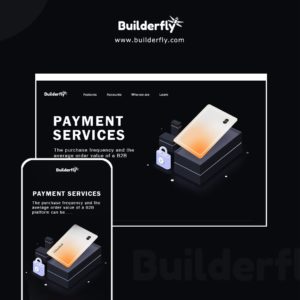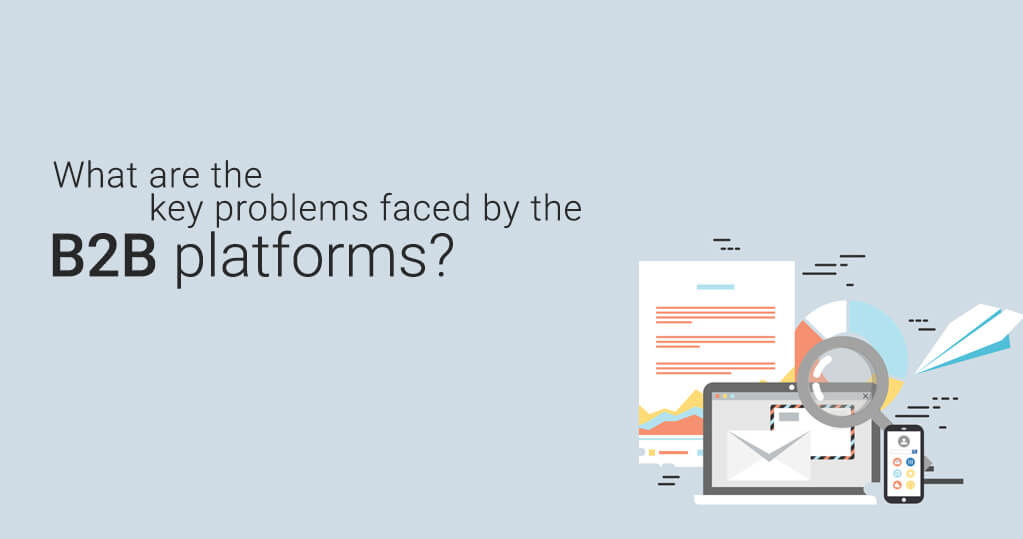Usually, B2B businesses feel that their B2C peers are having a better life with simple product descriptions, standardized payment options, and fixed pricing, the B2C retailers apparently face fewer obstacles as compared to the B2B platforms. However, with the B2B ecommerce market reaching the anticipated $6.5 trillion, double the estimates of B2C markets, by 2020, the rewards are worth that extra effort. The B2B or the Business to Business ecommerce business has grown to beat the B2C or Business to Customer ecommerce business. This growth, although beneficial, created a few additional challenges to the sector. In this blog, we will be discussing the key problems faced by the B2B platforms.
What are the key challenges faced by B2B ecommerce platforms?
The challenges faced by the B2B business owners are quite different from the ones faced by directly dealing with the customers. Unlike for B2C businesses, where continuously growing number of customers are required for a business to succeed, for B2B, all it requires is a few customers. Rather, the success of a B2B business depends on the way you approach your customers and the marketing strategy you employ. A thorough analysis of customer expectations and requirements can help you gain those customers who can potentially profit your business. You must be sure that you invest your precious time, efforts, and money in the right way to be prepared for the challenges you may face during the process. Here are a few challenges we compiled that are generally faced by B2B ecommerce platforms:
Complex Purchase Path
Selling to a customer follows an easy path wherein a customer browses through the products; choose the one they like, probably read the reviews and ratings, makes the payment, and completes a purchase. On the other hand, selling to a business can be more complicated and obscure wherein the buyer browses through the products, choose the one they like, contact the seller to ensure if the product is exactly what they are looking for, submit at least two other quotes to the superior, contact the seller to negotiate the price, contact other vendors to negotiate the product price, present new quotes to the superior, probably the superior seek the finance sector for approval, the superior approves the purchase, and lastly, the buyer makes the payment, and completes the purchase. The B2B buyers need to get a lot of information and follow a complicated procedure to make a purchase. Similarly, it becomes quite difficult for B2B platforms to earn customers. However, once earned, they can ensure that, if serviced well, the customers are not going anywhere else.
Managing Client Relationships
Another significant problem faced by B2B platforms is to maintain and manage client relationships. If a B2B platform needs to stay above their competitors, they must stay connected with each client they have. In case an existing client is showing no signs of purchase since quite a few times, the B2B business must be ready with a follow-up strategy by integrating CRM (Customer Relationship Management) software with their ecommerce platform. This integration is essential as it looks after client interactions, speedy services, easy processing, and overall communications.
Higher Product Value & Varying Prices
The product value of B2B orders is usually significantly more than that of B2C ecommerce platforms. B2B customers have their own set of pricing agreements, payment terms, discount structures, and promotional deals. Although not impossible, it becomes extremely difficult to list a fixed product price on the product page. Managing these variations in the product value, payment terms, and promotions require a B2B ecommerce platform that is able to set predefined rules for different customers or must integrate with business systems that are able to draw information. Using the latter method, one can create tailored information with reference to the unique requirements of various customers.
Technological Development

This is one of the major challenges faced by B2B ecommerce platforms. The ecommerce marketplaces are not equally integrated for the buyers and suppliers, the user experience is much low as compared to B2C businesses, the search engines are not up to the mark, the product descriptions are not detailed as in B2C, the searching process is complicated due to lack of relevant use of keywords, the legal regulations for documentation is yet to be developed, and the pricing and complete buying process is not as transparent as in the B2C business deals.
Staying above the crowd
Gone are the days when reaching large audiences was confined to only big companies. Even a startup can now reach as much audience as they wish using the right marketing tactics, social media platforms, webinars, and the list go on. However, for B2B platforms, staying above the crowd remains a big challenge. They have to contend with a wider pool of competitors. With that, it has become essential to let your potential clients know why you are different from the rest. Earlier, creativity was considered as a luxury that could only be afforded by the B2C ecommerce businesses; however, things are not the same anymore. You must know that the audience connecting with the B2C companies could be the same interacting with your business. Therefore, it becomes essential for B2B businesses today to create a powerful brand image and stay above the crowd.
Payment Services

The purchase frequency and the average order value of a B2B platform can be quite higher than that of B2C companies. The payment services not only play a vital role in quality customer experience but also they must adhere to the international financial as well as legal regulations. The various payment methods accepted in different countries, the variations in the product pricing based on the quantity, and the different terms and conditions of the supplier often lead to a delayed term in the selling and purchase cycle. Also, invoicing for a few product quantities is a challenge imposed on the B2B platforms.
Delivery of large-scale products
Unlike B2C ecommerce companies, the B2B platforms have to deal with the challenge of handling and delivering large-scale products quickly and efficiently. In order to fulfill the customer demands, B2B companies, usually, employ specialist freighting services adding significant expense to the orders and impacting the delivery time. Therefore, it becomes essential for B2B platforms to let the buyers see the accurate shipping charges as well as the approximate delivery dates in order to avoid giving unpleasant surprises to your customers.
Bulk Pricing
Majority of the B2B platforms base their pricing structure on the volume of the order. However, this challenges the order processing systems. The B2B companies can integrate Content Management Systems to resolve the issue by offering discounts when a particular customer orders a specific quantity of products. There are many pricing models that let you provide multi-tiered pricing or customized pricing tiers to your customers who order frequently or the ones who order in bulk. You can also consider setting up fixed discounts when a customer orders “n” number of products or give features like “Free Delivery” on or above an order a particular value.
Lead Generation
B2C ecommerce businesses have a short sales cycle as compared to the B2B sales cycle. The B2C businesses have to market directly to the customers who then purchases the product, if liked, within a few minutes. However, B2B buying processes are more complicated. The chances of an impulse buy, which is quite high in the B2C market, can be narrowed down to a few or even zero when it comes to the B2B platform. For a lead generation in the B2B platform, you would require a well-planned marketing strategy to build a personal relationship with the client for the long run. The primary step to achieve this is through quality content. Therefore, producing engaging yet relevant content is quite essential in the B2B business.
Providing a User-Friendly Experience
A B2B ecommerce platform should be providing a self-service option as well as a self-service system for its merchants. The reason is, some clients prefer setting up automatic purchase orders to restock the inventory and on the other hand, there are some who’ll need an emergency delivery within 24 hours. The merchants must be able to alter the delivery dates as well as the shipment value using a self-service system. Moreover, the B2B platforms can consider establishing flexible payment methods that let other businesses place large orders with a pay-later option. You must know that providing such flexible payment options gives a more competitive edge to the B2B ecommerce platform.
Conclusion
When it comes to the B2B businesses, a “good image” is preeminent in order to stay above the crowd. Integrating a human element in your services can help you transform a faceless company into a trustworthy brand. Recent researches state that the average conversion rates in a B2B ecommerce platform are 10% which is 3% in the B2C businesses. By choosing the right ecommerce platform such as Builderfly, the B2B sellers can easily leverage the true potential of selling online.








